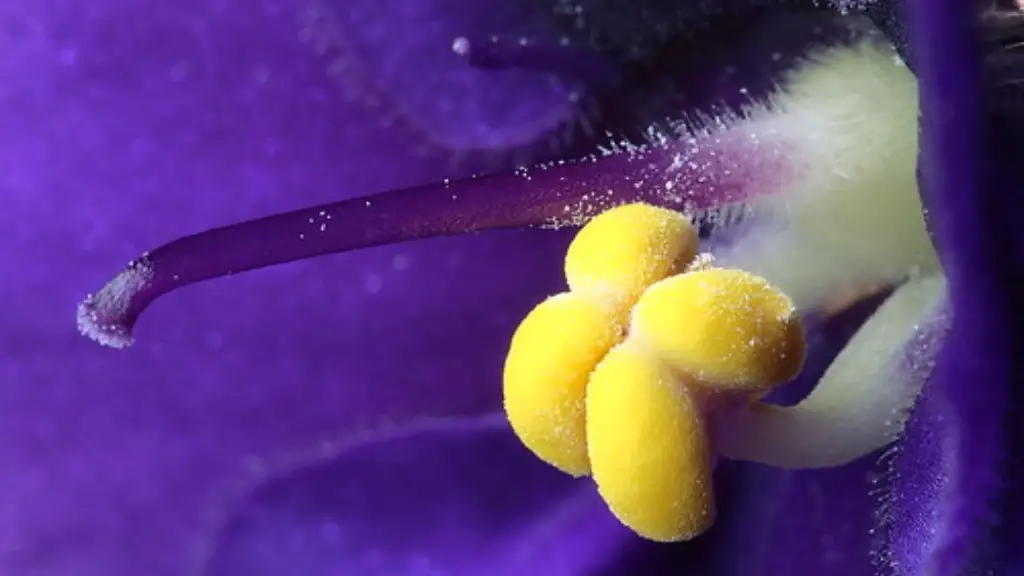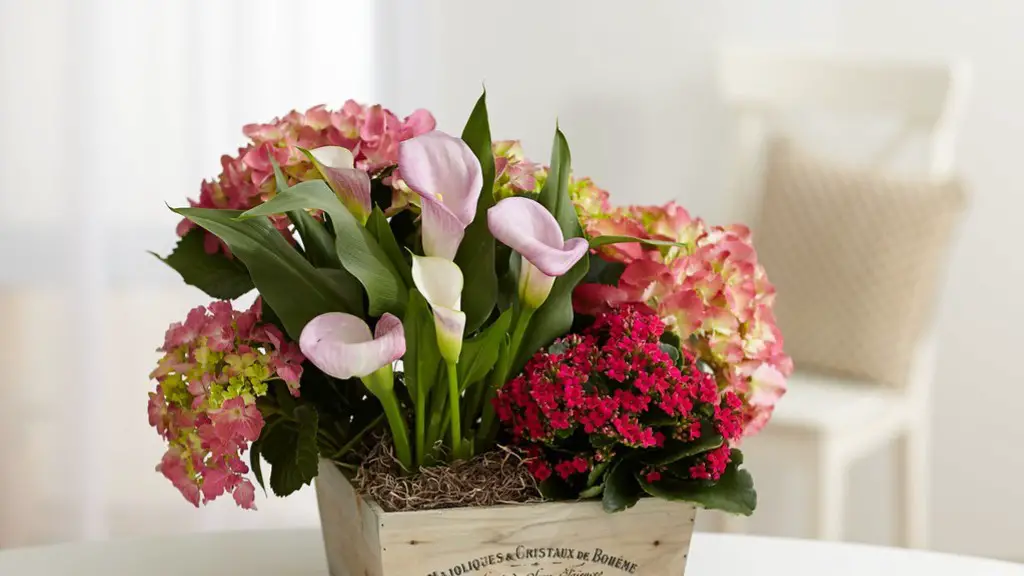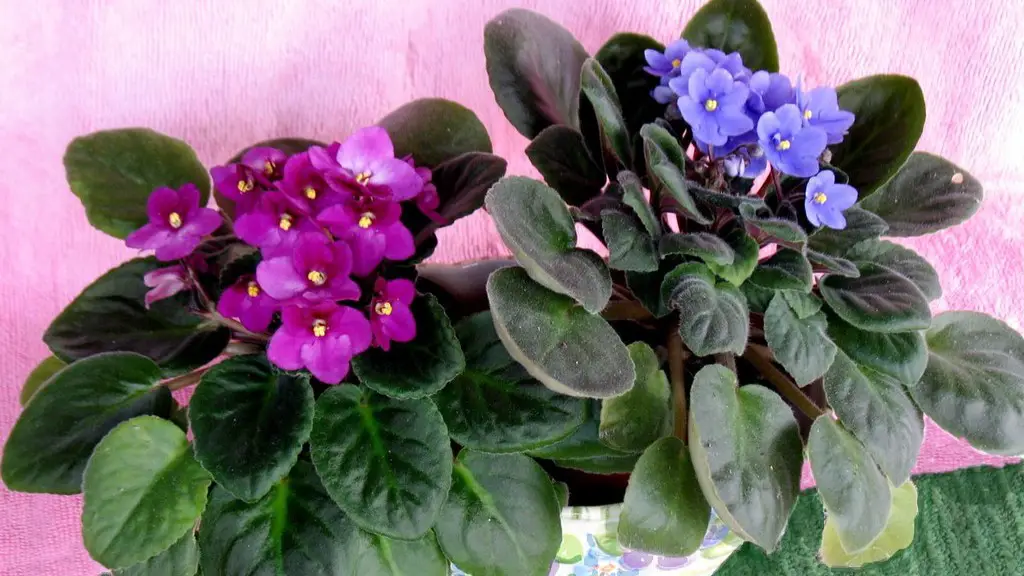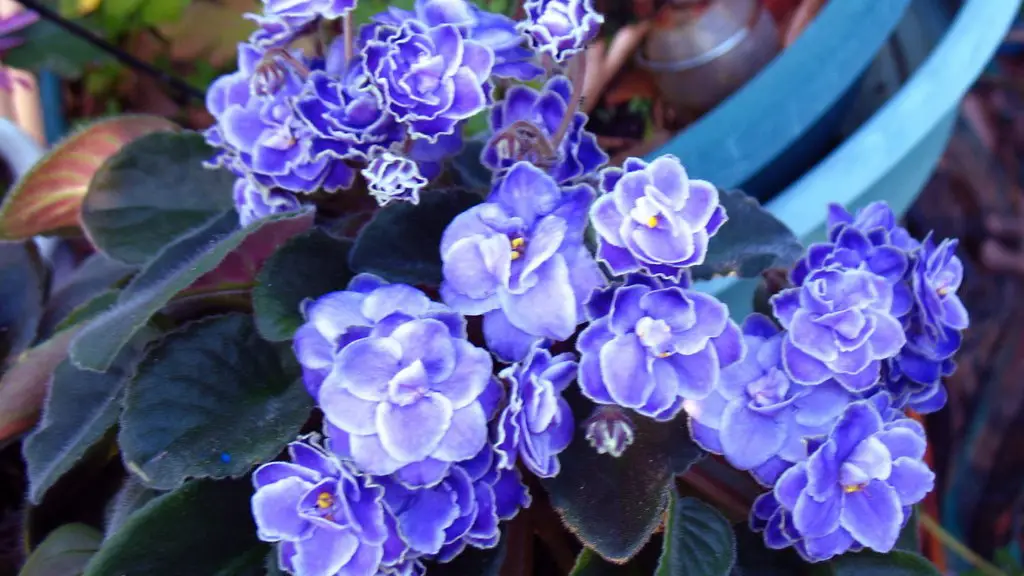African violets are a type of houseplant that is very popular. They are known for their beautiful flowers and for being relatively easy to care for. However, one of the most common problems that people have with their African violets is that they can be easily over-watered. When this happens, the leaves of the plant will begin to turn yellow and wilted. In severe cases, the roots of the plant can begin to rot. If you have an African violet that has been over-watered, then you will need to take action quickly in order to save the plant.
The first thing that you need to do is to remove the plant from the pot that it is in. Once you have done this, you will need to carefully examine the roots of the plant. If you see any that are brown or black, then you will need to carefully trim them away. Once you have done this, you will need to replant the African violet in a fresh pot of soil. Be sure to water the plant carefully, and only when the soil is dry to the touch. With proper care, your African violet should make a full recovery.
First, it is important to determine if your African violet is truly overwatered or if it is suffering from another problem such as too much sunlight or insect infestation. If you believe your African violet is overwatered, the best course of action is to transplant it into a new pot with fresh, well-draining soil. To do this, carefully remove the plant from its current pot and gently shake off any excess water and soil. Next, create a well in the center of the new pot and place your African violet inside. Fill in the space around the plant with fresh potting mix, being sure not to press the mix too tightly around the plant. Water the African violet lightly and keep it in a warm, bright spot out of direct sunlight until new growth appears.
What do I do if I overwatered my African violet?
If you have soft, limp, or mushy leaves due to overwatering, first of all stop watering the plant. Then gently remove the soft, limp, or mushy leaves and gently remove the plant from the pot. Gently remove the old soil, being careful not to remove too much soil, as the African Violet plant likes to be root bound.
If your African violet has burnt or dry leaf tips, it’s likely dehydrated. Try placing your plant on a humidity tray to boost the moisture in the air. If your African violet has drooping leaves, it may be suffering from low temperatures. Keep your indoor environment around 70 degrees Fahrenheit, even at night.
How do you transplant overgrown African violets
It is important to repot your African violet every year or so in order to keep the plant healthy. When repotting, be sure to use a light, well-drained soil mix and to not bury the plant too deeply. Water the plant well after repotting and place in a bright, indirect light.
It’s important to remove all the brown, rotted roots from your violet before repotting it. This will help prevent the spread of root rot and ensure your plant has a healthy start in its new pot. Be sure to use a light, airy soil that is barely moist. You can also add a thin layer of perlite to the bottom of the pot to provide adequate drainage.
How do I bring back an overwatered plant?
If your plant is wilting, it’s likely because it’s not getting enough water. The first step is to stop watering it. This may seem counterintuitive, but it’s important to give the plant a chance to dry out.
If your plant is in a bright window, move it to a spot with less light. This will help the plant conserve water.
Next, check the drainage. Make sure the plant is in a pot with drainage holes so that the water can drain out. If the pot doesn’t have drainage holes, the plant will just sit in water and drown.
If the pot does have drainage holes, but the plant is still wilting, it may be because the air is too dry. Try misting the leaves with water to help raise the humidity.
Finally, when the plant is no longer wilting, water it thoroughly and then let it dry out completely before watering again. Give it a week or so to see if it recovers.
If you overwater your plant, there are several ways to rescue it! Overwatering doesn’t always have to mean that your plant dies. You can let the soil dry, repot your plant in soil or leca, or propagate your plant to not have to give up on your plant and let it die.
What kills African violet?
If you have wild violets in your lawn that you would like to get rid of, you can use a broadleaf killer that contains 2,4-D or Dicamba. This will selectively kill the violets without damaging the grass. Another great wild violet herbicide is called Drive (quinclorac).
The stem of a long-necked African violet can be cut at soil level using a disinfected knife. Trim the stem to remove any leaves or flowers that are below the soil line.
Should dead flowers be removed from African violets
If you have success getting your African Violet to bloom, be sure to pinch or deadhead spent blooms. This allows the plant to continue to put energy into creating more buds/blooms and beautiful foliage.
When you’re repotting violets, it’s important to choose a potting mix that’s suited for your climate. A quality African violet potting mix should provide good water-holding capacity and ample air pockets to guarantee healthy roots.
Tip #2 Use the right size pot
When it comes to pot size, bigger is not always better. In fact, using a pot that’s too large can actually do more harm than good. The roots of African violets need to stay moist, but not soggy, so make sure you choose a pot that’s just big enough to accommodate the root ball.
With these tips in mind, you’re well on your way to becoming a violet-re potting pro!
What is the best soil for repotting African violets?
African violets grow best in well-drained, slightly acidic soil. Miracle-Gro Indoor Potting Mix is specially formulated to provide indoor plants like African violets with the perfect growing environment. This mix will help your violets to thrive and produce beautiful blooms.
African violets should be repotted every two to three years, or as soon as they become rootbound. Rootbound violets will have roots growing out and around the rootball. If you wait too long to repot, the roots will become constricted and the plant will be stunted.
Is it better to root African violets in water or soil
African violets are beautiful flowering plants that are easy to root. The quickest and easiest way to root them is in water using a leaf. You can take the leaf from your existing African violets, or even from a friend’s plant.
African violets are susceptible to a number of different diseases, but root rot is one of the most common. If you think your plant may have root rot, there are some distinguishing symptoms to look for. One of the most obvious signs is that the plant topples over at the base, since the roots are no longer able to support it. The top part of the plant may also separate from the root system entirely, though the crown is still intact. Another dead giveaway is that the roots are decayed, and they may also have yellow or yellowish-brown stripes on them. If you see any of these symptoms, it’s best to remove the plant from its pot and inspect the roots. If they are indeed rotten, you will need to dispose of the plant and start over with a new one.
Will African violet regrow from roots?
African violets are a popular houseplant, and they can be easily propagated from cuttings. It takes around 3 to 4 weeks for a cutting to form new roots, and then you will begin to see new leaves growing. Once there are 2 to 3 new leaves, it is time to repot the plant.
The bottom line is to not give up hope too soon and realize that most plants can be saved with a little time and effort.
Knowing how to save a dying plant can be very rewarding, not to mention it can save you money. With a little time and effort, most plants can be saved. The key is to not give up too soon and to provide the plant with proper care, which includes rehydration. In most cases, improvement can be seen within 7-14 days. However, if the plant has sustained major damage or has a very small root system, it may take up to 2 weeks before any improvement is seen.
Conclusion
First, you need to stop watering your African violets. Second, you need to let the plant dry out completely. Once the plant is dry, you can then transplant it to a new pot with fresh, dry potting mix.
If your African violet has been over-watered, the leaves will be limp and the stem may be discolored. The best way to transplant an over-watered African violet is to gently remove it from the pot, shake off any excess water, and then replant it in a pot with fresh, dry potting mix. Water the plant lightly, and then allow it to dry out completely before watering again.





